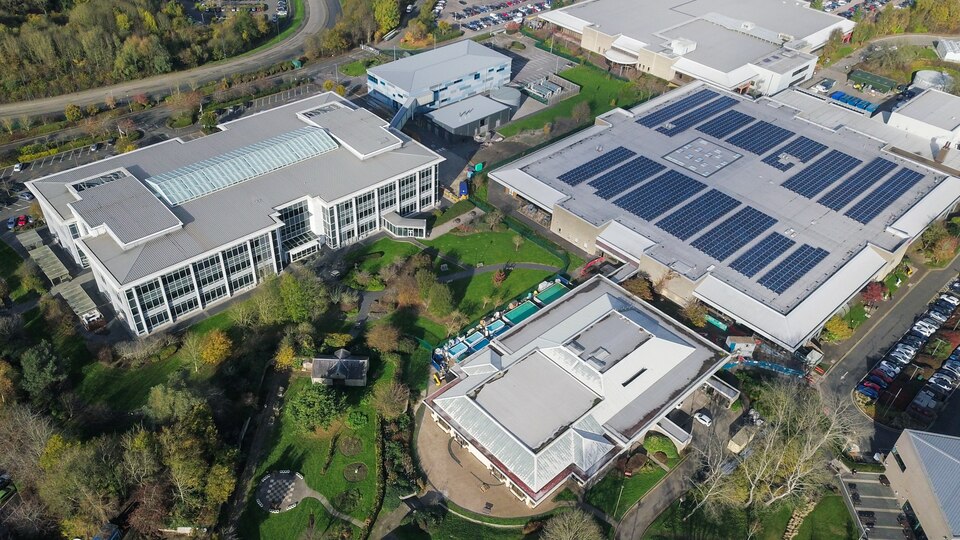Maximizing fluid dynamics and airflow is significant in optimizing the performance of heating systems. Forced-air furnace systems are routinely installed to provide heat to large spaces, but impaired airflow may result in uneven heating, increased energy bills, and excessive wear on equipment. This blog uncovers the science of fluid dynamics and how new airflow optimization technologies are being integrated into existing systems to increase both thermal efficiency and energy conversion. We also find out how innovations in fluid flow are reducing wasted heat, and why such innovations hold the key to sustainable, energy-efficient home heating.
The Basics of Fluid Dynamics in Heating Systems
Fluid dynamics is the branch of physics concerned with the movement of liquids and gases. In forced-air heating systems, airflow efficiency is crucial for proper distribution of heat throughout the building. The study of fluid flow allows engineers to understand how air moves through ducts and how that movement can be optimized to reduce energy loss and increase system efficiency (White, 2016). Airflow optimization techniques, such as controlling air velocity and reducing friction, can dramatically improve system performance. By understanding the principles of fluid dynamics, designers can identify areas where air distribution is uneven, ensuring more consistent heating and less wasted heat.
Incorporating dynamic simulations and computational fluid dynamics (CFD) software has made it easier to visualize and optimize airflow paths, ensuring the system operates at maximum efficiency. These innovations enable not only thermal efficiency but also help systems adapt to changing external conditions, such as temperature fluctuations or system demands.
Airflow Optimization Techniques in Forced-Air Systems
Improving airflow in forced-air systems takes more than an adjustment of a vent or a duct. High-end airflow optimization techniques tackle the manner in which air travels through the system to eliminate resistance and turbulence, which may cause heat loss and wastage of energy. Variable speed fans adapting air pressure based on heating demand are one common technique used. The systems provide maximum air velocity while preventing unnecessary energy consumption, improving overall thermal efficiency.
In addition, advanced materials and configurations in ducts can also reduce pressure loss and friction, raising airflow and energy conversion. Insulated ducting and smoother duct configurations, for instance, prevent energy losses conventionally incurred from friction between the air and the duct walls (Stern, 2020). These features offer a harmonious, effective air distribution system that makes more efficient use of thermal energy created by the furnace.
Advanced Fluid Flow Techniques for Reducing Energy Loss
It is critical to incorporate advanced fluid flow techniques in order to improve energy efficiency in heating systems. Dynamic dampers and heat exchangers are two technologies that have significantly helped reduce energy loss during air flow. Heat exchangers redirect waste heat from outgoing air in the system to cold incoming air, thus less energy is required to heat a room (Huang, 2019).
Dynamic dampers optimize airflow within the ducts by varying their position as a function of airflow rate and system pressure, enabling free flow of air in the system. This technology prevents heat loss in areas of the house with high air pressure, saving unused heat and optimizing energy conversion. By optimizing fluid dynamics, these systems promote environmentally conscious energy practices while reducing heating costs in homes.
Computational Fluid Dynamics (CFD) in Energy Optimization
Computational Fluid Dynamics (CFD) has been a very helpful tool for airflow optimization in heating systems. CFD simulations allow engineers to model and analyze airflow patterns, system behavior prediction, and identify inefficiencies before physical realization. Engineers, by simulating airflow optimization in a virtual environment, can optimize duct designs and decide on the best materials to use.
This process is particularly useful in designing systems that possess the capability of dynamically adjusting airflow and optimizing thermal energy recovery. For example, systems that utilize the CFD technology possess the ability to reduce energy wastage through non-uniform heating and improve overall system response to changes in demand. The use of CFD in energy management systems allows for the design of systems that experience maximum energy conversion with minimal disruption to heating performance.
Artificial Intelligence and Airflow Optimization
Artificial Intelligence (AI) has become an invaluable tool in optimizing the airflow of heating systems. By integrating AI, systems can dynamically adjust airflow based on real-time data, such as temperature, pressure, and occupancy levels. AI algorithms can predict heating demand patterns and adjust air distribution accordingly, optimizing both fluid dynamics and energy conversion (Zhao, 2021). This type of airflow optimization ensures that the heating system uses energy only when necessary, reducing waste and increasing thermal efficiency.
AI-driven systems also integrate with other smart technologies, like smart thermostats, to provide a more personalized heating experience. For example, AI can detect room occupancy and adjust air distribution to focus heating where it’s needed most. Over time, these systems can learn user preferences and adapt to changes in heating needs, making them incredibly efficient in maintaining both comfort and energy savings.
Conclusion
The integration of airflow optimization and fluid dynamics in heating systems is revolutionizing household heating efficiency. These technologies not only reduce energy loss but also maximize the optimal energy conversion capability of the system. Home owners stand to enjoy reduced utility bills, increased comfort, and reduction of their carbon footprint if they adopt these technologies. As the demand for energy-efficient homes grows, Power Fan is a revolutionary option that applies the concepts of thermal efficiency to offer an eco-friendly, smart energy conversion system.




